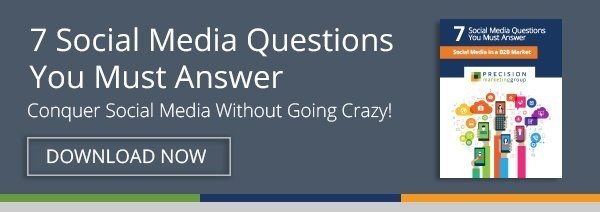Reaching out to a new prospect for the first time can sometimes be difficult or intimidating. But one of the most effective ways to prepare for that first point of contact is to thoroughly research your lead and then leverage that knowledge to make the most of your outreach.
With over 347 million active members, LinkedIn is one of the best ways to prospect and conduct that critical lead research. In addition to basic membership, this social platform offers several prospecting resources including LinkedIn Sales Navigator, a tool that simplifies the process of discovering and contacting qualified prospects, and monitoring their activity, as well as the activities of referrals and customers.
Despite its many benefits, a lot of people still aren't sure exactly how they can make the most of it. So this post provides a succinct introduction to LinkedIn Sales Navigator, as well as a few key tips for using it to your advantage.
Why LinkedIn Sales Navigator?
Designed for sales professionals, LinkedIn Sales Navigator really is a separate experience from LinkedIn. A premium service, it leverages both the LinkedIn network and relevant news, as well as user demographics, in order to help you connect, build and nurture relationships with potential customers.
Through LinkedIn Sales Navigator's advanced search filter, you can streamline the lead generation process by identifying high opportunity leads and other potential contacts that align with your target buyer persona. The search filters help you to narrow your focus on the kinds of businesses and key contacts that you are seeking to engage with.
Connecting with Your List of Target Leads
As you build your targeted high-quality lead list, pay special attention to:
- Accounts and connections with whom you've already met in person… think college, networking events, or even kids’ soccer games!
- Second-degree connections where you don't know the prospect personally but one of your existing contacts does.
Connecting with Someone You Already Know
This should be easy, right? Not necessarily. First of all, do NOT use LinkedIn's impersonal default message: “I’d like to add you to my professional network on LinkedIn”. Always write a customized connection request instead. Your chances of getting accepted decline when you go the generic route as the recipient may find the request sterile or just plain lazy, or they might not remember who you are. Remember even if you already know this person, do your homework and leverage the Sales Navigator tool to gather a deeper knowledge of your contact.
- Tip: Customize your request with a comment on their recent post or job change, or use their profile to identify what areas you may have in common; groups, volunteer efforts or work experience.
Another option is to reach out directly to the contact using InMail, the messaging system on LinkedIn that's similar to sending an email. InMail gives you the ability to send a message to anyone on LinkedIn, whether you're connected or not. InMail has some of the highest open rates of any messages that come from LinkedIn. Once again be sure to personalize the message based on the insight gathered in Sales Navigator.
Second Connection Warm Introductions (to Prospects You Don't Know)
Another great way to network is to tap into the credibility of another person by finding second connection paths between you and your target account and then asking for a warm introduction opportunity. Essentially, instead of sending a random, unexpected email to a stranger, you're introduced by a shared connection who knows the prospect. This gives the introduction request a much higher chance of being read and getting a response.
According to LinkedIn, you’re almost five times more likely to schedule a first meeting with someone if you have a mutual personal connection. And the great bonus is: with your LinkedIn Sales Navigator license, you have access to the Teamlink Connections Filter that maps networks of the other members of your sales team and your first-degree connections. This allows you to easily find the prospects who meet your search criteria and share an acquaintance with you.
The first rule of asking for a warm introduction is to do your homework and make it as simple as possible for your connection to fluidly make the introduction. When you send your connection a warm intro request, make the process efficient and easy by providing a link to your prospect's LinkedIn profile and a reason why you’re asking for the connection.
They Said Yes!
Congratulations – you have connected with your potential lead. Now what? Engage, engage, engage. Here are a couple suggestions regarding how to keep the online conversation going with your prospects:
- Monitor your prospects LinkedIn activity. Like, share and comment on their content. Is the prospect mentioned in the news? Or have they changed jobs? Send a note congratulating them on their achievement. In the words of the great Dale Carnegie, "You can make more friends in two months by becoming interested in other people than you can in two years by trying to get other people interested in you."
- Build trust and goodwill. The need to build trust is crucial in the early buyer-seller relationship. Build meaningful relationships and don’t push your product or service. Leverage the detailed knowledge gleamed from Sales Navigator and tailor your message to the individual prospect's needs. Ask what they are looking for help with professionally and then offer complimentary advice or resources to help address those issues.
In today’s digital age, there are more options than ever for connecting with prospects. Consider harnessing the power of LinkedIn, the world’s largest professional networking website and the LinkedIn Sales Navigator tool to create and build relationships with potential prospects.




